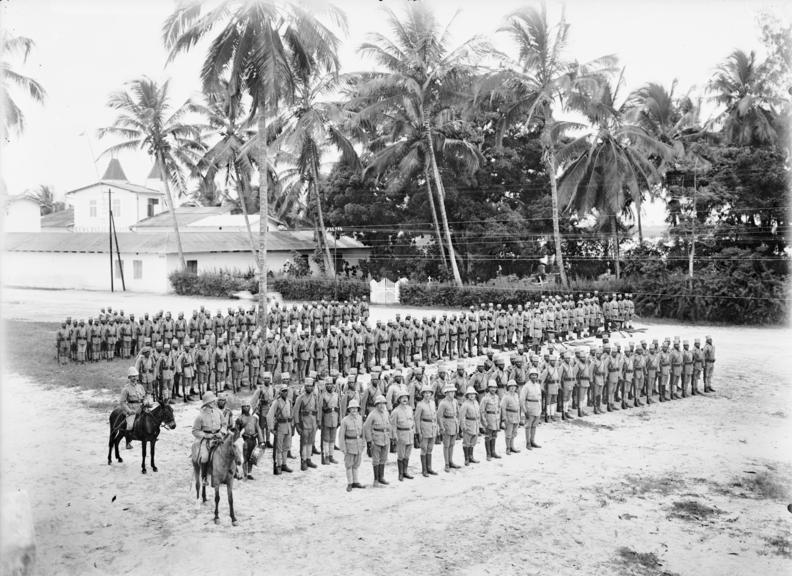
East African campaign (World War I)
The East African campaign in World War I was a series of battles and guerrilla actions, which started in German East Africa (GEA) and spread to portions of Mozambique, Rhodesia, British East Africa, the Uganda, and the Belgian Congo. The campaign all but ended in German East Africa in November 1917 when the Germans entered Mozambique and continued the campaign living off Portuguese supplies.[14]
The strategy of the German colonial forces, led by Lieutenant Colonel (later Major General) Paul von Lettow-Vorbeck, was to divert Allied forces from the Western Front to Africa. His strategy achieved only mixed results after 1916 when he was driven out of German East Africa. The campaign in Africa consumed considerable amounts of money and war material that could have gone to other fronts.[2][15]
The Germans in East Africa fought for the whole of the war, receiving word of the armistice on 14 November 1918 at 07:30 hours. Both sides waited for confirmation, with the Germans formally surrendering on 25 November. GEA became two League of Nations Class B Mandates, Tanganyika Territory of the United Kingdom and Ruanda-Urundi of Belgium, while the Kionga Triangle was ceded to Portugal.
Aftermath[edit]
Analysis[edit]
Nearly 400,000 Allied soldiers, sailors, merchant marine crews, builders, bureaucrats and support personnel participated in the East Africa campaign. They were assisted in the field by 600,000 African bearers. The Allies employed nearly one million people in their fruitless pursuit of Lettow-Vorbeck and his small force.[3] Lettow-Vorbeck was cut off and could entertain no hope of victory. His strategy was to keep as many British forces diverted to his pursuit for as long as possible and to make the British expend the largest amount of resources in men, shipping and supplies against him. Although diverting in excess of 200,000 Indian and South African troops against his forces and garrison German East Africa in his wake, he could divert no more Allied manpower from the European theatre after 1916. While some shipping was diverted to the African theatre, it was not enough to inflict significant difficulties on the Allied navies.[14]
Soon after the end of World War I, the narrative about the East African campaign became the subject of mythologization and distortions.[59] Upon returning home, the Schutztruppe veterans, most importantly Lettow-Vorbeck, were treated as "heroes" by Germans who "refused to accept the reality of defeat in the field". Lettow-Vorbeck supported the narrative that his force had remained undefeated. By the time of his surrender, he insisted on signing the surrender documents on several conditions, including that his force was recorded as having stayed in the field until the conflict's end. In reality, he agreed to an unconditional surrender, albeit under protest.[60] In the years after the war, German colonial and military literature as well as the Nazi Party pushed the view that Lettow-Vorbeck had been "undefeated in the field" (German: Im Feld unbesiegt!) as part of the larger stab-in-the-back myth.[59][n] In Germany, Lettow-Vorbeck and the East African campaign became the subject of songs and glorification.[59] Many Allied commanders also felt great respect for the East African Schutztruppe and Lettow-Vorbeck in particular, further enhancing their military reputation.[62]
Views about Lettow-Vorbeck's campaign vary. A large number of modern historians and other researchers have continued to describe the Germans in East Africa as undefeated by the end of the war.[63][o][64][p][65][q][r] A growing number of German historians have criticised this view since the 1990s, alongside other narratives about Lettow-Vorbeck as outdated, biased and based on post-war legends.[67]